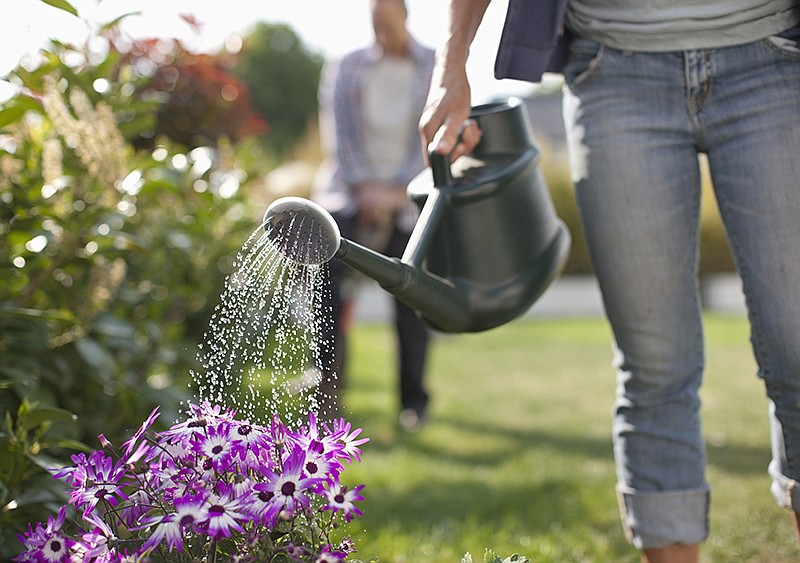A recent survey by Scotts Miracle-Gro reports that 55% of American adults are gardening during the pandemic as a way to stay busy, relieve stress and get closer to their food source. But, according to the National Gardening Association's 2020 National Garden Survey, the pandemic could also influence the way we garden, with economic uncertainty forcing a trend toward more DIY garden projects, among other cost-saving measures.
I can personally attest to multiple trips to garden supply stores to source the best deals on everything under the sun to grow, well, everything under the sun. While I won't divulge all my secrets, I will share some hacks to make gardening cheaper and easier.
CONTAINER GARDENS
Growing in popularity: According to statista.com, roughly 21 million American households turned to container gardens in 2019. The self-contained format often makes it easier to control things like soil type, pH and more, which can save you money on other supplies such as fertilizer, but prefabricated raised beds can cost $100 or more depending on the size and materials.
* A hanging shoe organizer makes for a cheap yet stylish herb garden. Be sure to poke some holes in the bottom of each pocket if water doesn't naturally drain through, and hang it outside or over something you don't mind getting wet and dirty.
Estimated cost: $10
* Similarly, house gutters can double as chic hanging gardens. Simply cap each end, drill some holes in the bottom and affix to your privacy wall. If you want to get really creative or use your installation indoors, stack them to create a self-watering system; just be sure to only use water-loving plants in the bottom rung, like water lilies and small ferns. Since gutters are typically only 6 inches deep, you'll also need to stick with shallow-rooted plants, like pansies and succulents.
Estimated cost: $5-$20
* This next trick is very literally a garden of containers, but burying plastic pots up to the ground level of your garden means you can easily change things out or bring them inside when the weather turns. Just drop potted plants in, making sure both pots offer drainage, and cover with mulch.
Estimated cost: $1 per pot
STARTING SEEDS
Did you know? The Chattanooga Public Library offers resources for library card-carrying gardeners. You can check out packets of vegetable, fruit and flower seeds, as well as tools.
* No need to buy a seed kit when you've got toilet paper and paper towel rolls. Fold one side over (score it first if need be) and then fill with dirt, any additional nutrients you want, and your seed(s). Water regularly, and once the seedlings are ready to be planted, unfold the bottom and plant the whole thing.
Estimated cost: $0
* To create optimal conditions and protect young plants, remove the label from a size-appropriate clear, plastic bottle, cut off the base and place it over top to create a mini greenhouse. You'll probably need to bury the base a little bit to help keep it in place.
Estimated cost: $0-$3
* Hydrogen peroxide doesn't just belong in your bathroom. You can use it in the garden, as well. But before we get to that, use it to help seeds germinate. Tom Stebbins, Chattanooga's UT Extension agent, says he can't back up the claims that hydrogen peroxide can help seeds sprout faster and develop stronger roots, but soaking your seeds in it will remove any bacteria, he says. He recommends using a 1:10 mixture and rinsing seeds after. To test the other benefits, water your seedlings with 1 teaspoon of hydrogen peroxide per cup of water. Store any leftovers in a cool, dark place. Hydrogen peroxide is susceptible to light (and heat), hence why it's sold in brown bottles.
Estimated cost: $5
KEEPING PESTS AT BAY
* Crabtree Farms Director of Horticulture Andy Boyd agrees with the many gardeners who say hydrogen peroxide can also be used to clear up root rot and misted on leaves to kill fungus. Where they tend to disagree is the recommended ratio. Since the antiseptic can also kill good organisms, start small. The seed-germinating ratio may work, though some sources call for up to 1 tablespoon per cup of water. Spray leaves in the evening to prevent making them more sun-sensitive during the height of the day.
Estimated cost: $5
* To prevent pests like ants and small critters, many sources swear by sprinkling cinnamon around plants or beds. Mixing it in with the soil will also help prevent plants from falling victim to fungus in the soil, they say, though neither Boyd nor Stebbins can confirm this. Stebbins recommends using a ring of aluminum foil at the base to keep out cutworms, one of the most predominant threats to young plants.
Estimated cost: $1
* Gardeners can spend hours weeding each week. To have more time to enjoy your blooms, you could buy landscape fabric - or you could layer cardboard or newspaper below your mulch to prevent those pesky other sprouts in the first place.
Cost: $0
